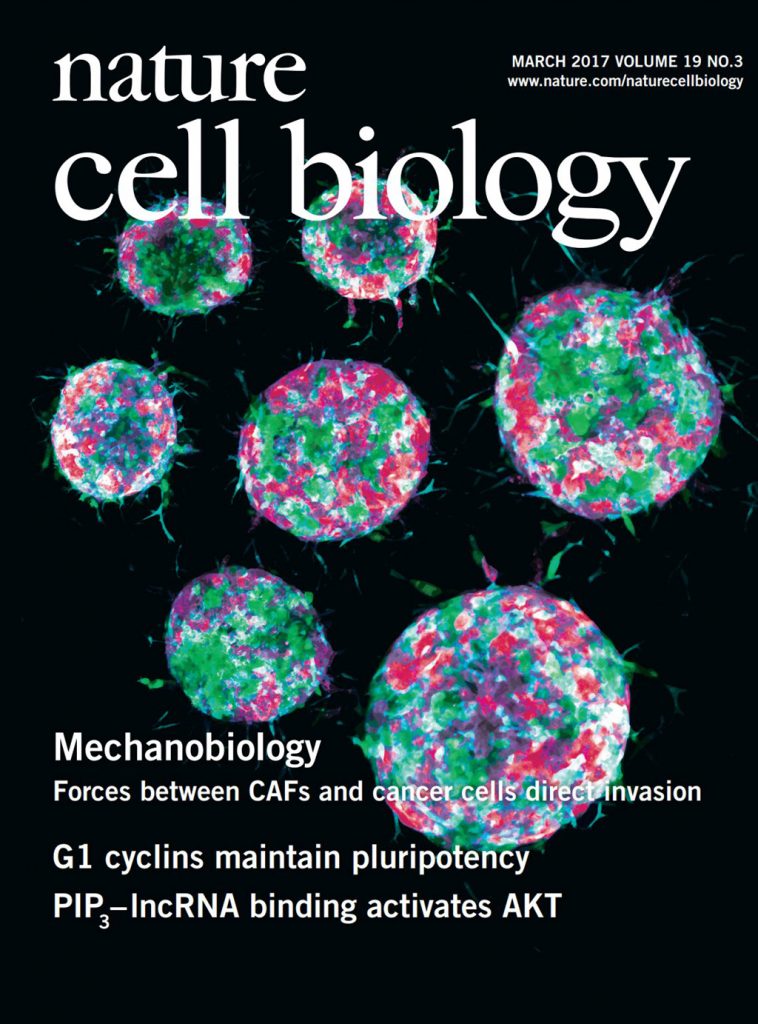Metastasis, responsible for the majority of deaths in patients with cancer, is the process by which cancer cells separate from the original tumor to form new tumors in other organs or tissues of the body. Although initially some types of carcinoma have a very limited ability to invade the tissue around them, they finally find the mechanism to do so, thus increasing the aggressiveness of the cancer.
In this study, we identified a mechanism by which cancer cells manage to escape the tumor to promote metastasis. The study revealed that tumor cells can reprogramme their healthy neighbours, dragging them out of the tumor and into other tissues. The victims of this ‘kidnapping’ are fibroblasts, a cell type that is responsible for the synthesis and organization of the extracellular matrix. Fibroblasts are “professionals” in maintaining healthy tissues, and are able to create tunnels in the tissues to travel through. They use this ability to restore the tissues when we suffer an injury.
We discovered that cancer cells use the mobility of fibroblasts to escape the tumor and travel through tissues. The surrounding tumor, or stroma, modifies these fibroblasts and uses them for the invasion. From this point, the fibroblasts turn ‘bad’ and start to serve the cancerous cells, tracing paths for them through the extracellular matrix surrounding the tumor.
The main challenge of the study was to identify the mechanism by which cancer cells adhere to fibroblasts and move together. This turned out to be a a biophysical interaction between two different proteins, one located on the surface of cancer cells called E-cadherin, and another expressed on the surface of fibroblasts, called N-cadherin. Despite the different natures of the two proteins, the study reveals that the join between cancer cells and fibroblasts is just as strong as that which connects cancer cells, which emphasizes that this unusual interaction is much more effective than previously thought.
Reference
